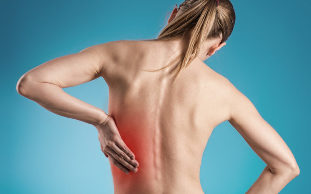Vague pain in ribs and back can disturb anyone. Pain is not a reason to panic, but an opportunity to understand their diseases. Pain is a sign that you need to take some action. In typical cases, pain in ribs and back are quite certain reasons.

A group of diseases where under the rib cage
There are several underlying diseases:
- Diseases of the digestive system – inflammation of the pancreas or pancreatitis, cholecystitis, diseases of the spleen;
- Injuries – bruises and rib fractures, ruptures of the spleen;
- Diseases of the respiratory system – pleurisy, pneumonia;
- Kidney stones, particularly renal colic;
- Lower back pain and herniated discs;
- Diseases of peripheral nerves – intercostal neuralgia, and autonomic disorders, in which pain is to hike the entire surface of the back.
Don't try to find out the cause of their own, at least the review come back in 2-3 hours.
Pain digestive disorders are always related to error in diet, and exacerbation of chronic diseases provoked the offseason. Classic time the pain with cholecystitis – after 2-4 hours after a large meal, when the distribution of the bolus needed enzymes and digestive juices.
Pain in the back inflammation of the pancreas is very strong, "dagger", more in the left ribs, an attack can last for up to two days. Provokes aggravation of fatty foods, especially in combination with alcohol.
Sore ribs and back when you stretch the capsule of the spleen, diseases of blood, chronic indolent infections, sepsis, auto-immune processes. Such pain in the rib area, where the food has almost nothing in common.
Damage that back pain
The threat is damage to the spleen and liver, their tears. These bodies – the basic tissue that consists of actively functioning tissue, which is not limited to the capsule.
Parenchyma – the main fabric for the body of the same function. Thus, the liver parenchyma consists of hepatocytes.
Structure of this fabric is soft, there are very few support elements. To resist the mechanical strain in the parenchyma of the can. When you break the capsule cage "out of order". This breaks the threat of massive blood loss, because the blood vessels of the parenchyma literally everywhere.
If any impact or injury to the rib area of the person is required to send to the hospital and get released on the only, if not detected any signs of internal bleeding.
Also a threat of hematoma in the retroperitoneal space, which again hurts the back. This happens when the trauma, kidney and adrenal glands, and duodenum 12. It's not just the pain under the ribs behind from behind, but sudden weakness, accompanied by a decrease in blood pressure.
Compared to the rupture of the liver or spleen, broken ribs – much less risk. It is only necessary to ensure that the piece punctured the pleural cavity.
Lung diseases and kidney
The back and ribs can be dry pleurisy when the pleural layers RUB against each other. This is possible in the event that the advanced tuberculous process, cancer processes in the lung. This pain increases with any movement, coughing or sneezing. It is also worrying, shortness of breath, and nasolabial triangle appears blue.
If any pain in the chest or back, it is recommended to perform an ECG to leave a myocardial infarction.
Resciesa back and ribs is emissions, urinary tract. Special hard waste urate – stones, which consists of potassium and sodium salts of uric acid. In appearance they resemble the beans. They are impressive in size, very dense. The ureter should be thoroughly expanded, skip this stone.

Oxalate is less dense small, easy to crumble, but they hurt on the way to the inner part of the urinary tract, necessarily, causing inflammation.
Neurological causes
This is a different violation of the nerve roots emerging from the spinal cord. The spine can be damaged hernia, pressed bone channel, muscle, a piece of vertebra, ligament, arch. The back and ribs are very strong, sometimes it is even impossible to breathe.
A lot of problems – intercostal neuralgia, as the burning pain pervades every breath, hurt his back and chest. This disease is a complication of degenerative processes in the spine and not only. Contribute to metabolic disorders, a range of viruses, endocrine diseases and abnormalities in heart rhythm or myocardial contractility, when tissues do not receive enough nourishment and oxygen.
Unclear is the mechanism of development of autonomic disorders, in which the wave-like change of physiological parameters (respiratory rate, heart rate and blood pressure), all involved will move back and ribs.

























